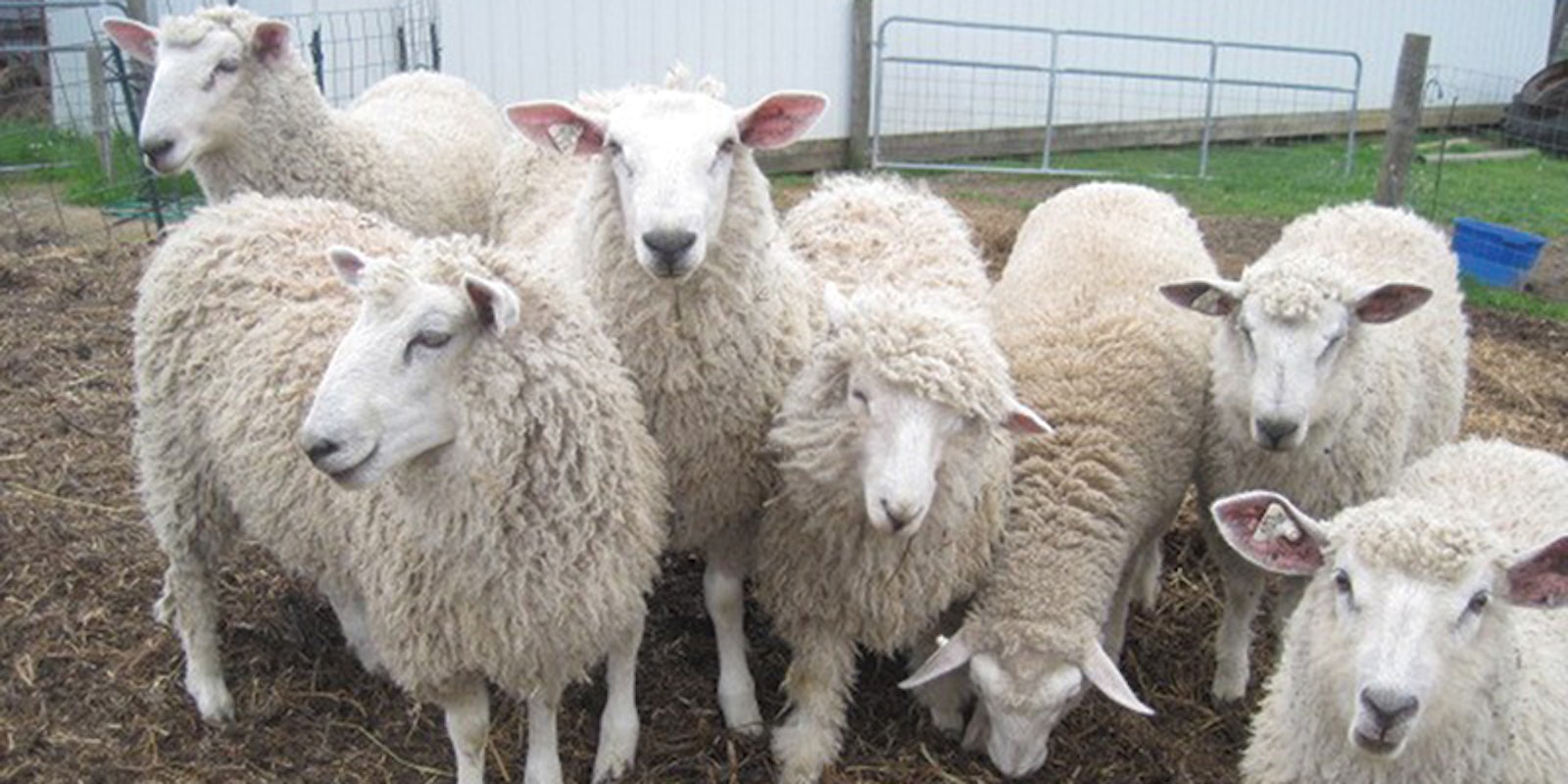When shepherd and master spinner Carol Densmore began raising Bluefaced Leicester (BFL) sheep, she planned to keep the flock purebred. Two years in all changed when Carol became smitten by Lincoln Longwools. In “Bluefaced Leicester Crossbred Wool” from Spin Off_ Fall 2016_, Carol explains what to look for in a crossbred sheep fleece. “Crossbred sheep create interesting and exciting wool variations for handspinners,” Carol says.
While fleece shopping at a fiber festival or guild sale, you’ll more than likely come upon crossbred fleeces. Like the sheep themselves, the fleeces are typically very sound. I still mentally run through the fleece judging criteria that I follow when I’m judging fleece competitions. Criteria such as yield and length apply to any fleece, crossbred or purebred. But when it comes to soundness, character, and crimp, the crossbred fleece could use a bit more scrutiny.
Because the intermittent crossbreeding that I do (as do many other shepherds) is not a long-term, consistent breeding program, the fleeces can be inconsistent in some areas. Soundness could be a result of a sheep’s environment, but it could also be a positive or negative result of the crossbreeding. Make sure to do the “twang” test: Hold a lock of wool near your ear and pull or snap the ends in the opposite direction. You should hear a twang-type sound. Pull locks from various sections to make sure that the soundness is consistent throughout the fleece. If it is, it’s a good, sound fleece.
Meet Hannibal, one of Carol’s Bluefaced Leicester/Lincoln crossbred sheep. Photo by Carol Densmore.
The character and crimp should also be inspected with a closer eye. In the past, I’ve had crossbred sheep with a small patch of wool that had a mind of its own. It just didn’t look like the rest of the fleece. In purebred flocks, these types of inconsistencies are bred out of the genetics over time. With intermittent or random crossbreeding, the occasional fluke is more likely occur. So inspect the entire fleece if possible to ensure that the wool has the same characteristics: the locks are the same width, the crimp or wave pattern is distinct from the base to the tip of the lock, and the overall fleece has consistent luster or matte appearance, depending on the breed combination.
If purebred wool is not available or is outside your price range, crossbred wool is a great alternative and could be very satisfying to spin. With the wide variety of sheep breeds available, crossbreeding is a valid way of expanding wool available to handspinners in the fiber art community.
—Carol Densmore
CAROL DENSMORE holds a Master Spinner Certificate from Olds College in Alberta, Canada, and raises more than forty longwool sheep. She teaches spinning and judges fleece and handspun competitions at festivals. When she’s not spinning at guilds and with friends, you can find her shearing, shepherding, tending to her dye garden, and tinkering with her flock of antique spinning wheels on a farm in central Michigan. Visit her at www.crosswindfarm.com.
Featured Image: A class picture of the Carol’s crossbred lambs. Photo by Carol Densmore.


